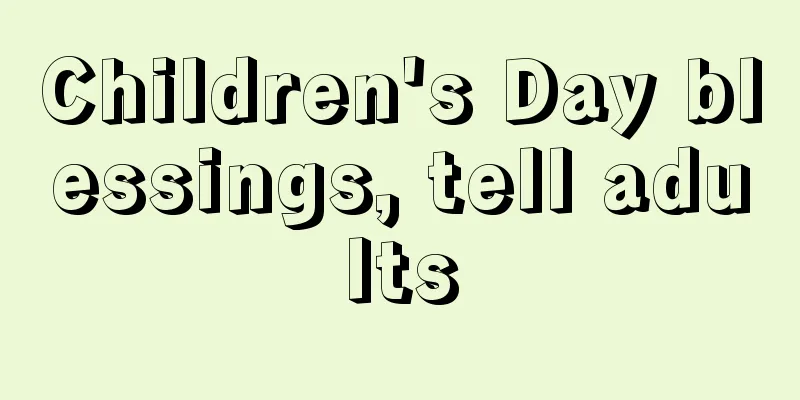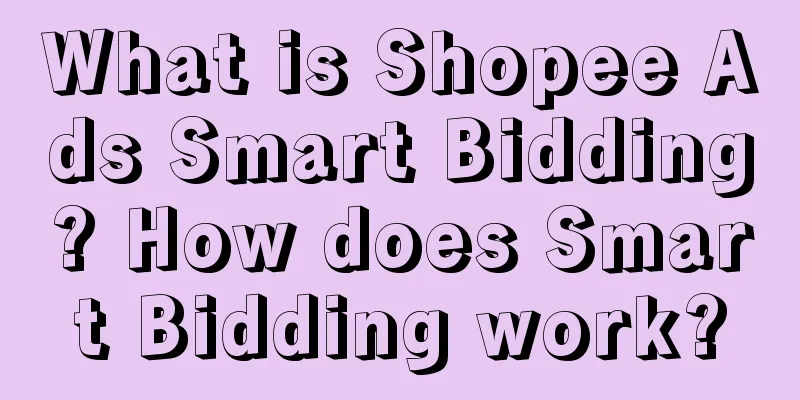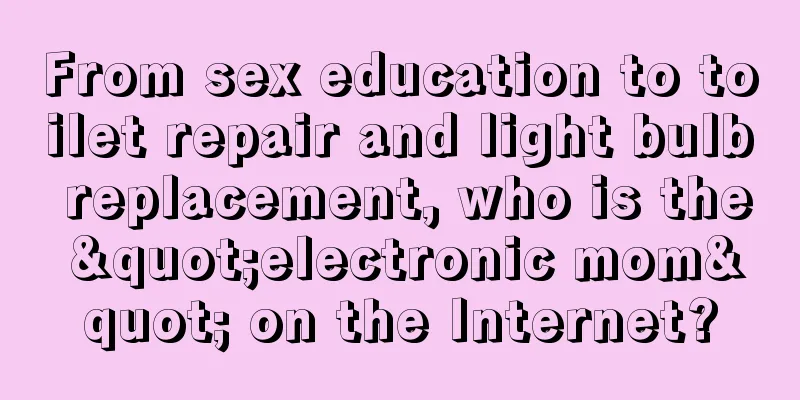The application of comedy elements in content marketing: How to use humor to make content more attractive?

Some time ago, I read Greg Dean's "Step-by-step Guide to Talk Show Practice Series" and used the American comedy framework mentioned in the book to disassemble 13 brand advertising cases. In this article, I will also share with you 6 practical comedy marketing skills from the American improvisational comedy group Second City Works project, 3 common comedy marketing minefields, 4 types of sensitive topics, and 5 coping methods. References are at the end of the article. So, let’s get started. 1. Advantages of comedy elements in content marketingAccording to Fredrickson, BL's leniency-construction theory, humorous elements can make people less likely to reject advertisements. According to Hofmann, V.'s research, humorous elements can enhance the recognition and acceptance of advertisements. According to research by Gorn et al., emotional music in advertisements can influence consumers' attitudes toward products. Schmidt's research shows that humorous advertising can improve the recall and cognitive effect of advertising information. Research (Eisend) shows that humorous ads can stimulate dopamine in the brain, enhance the effectiveness of information transmission, and leave a deeper impression than non-humorous ads. In summary, comedy elements have four significant advantages in content marketing. They are:
Below I will use 13 cases to illustrate how they use American comedy foreshadowing and joke frameworks to create unexpected situations to attract the audience and make the originally serious content light-hearted and interesting. The framework of American comedy is as follows: [Preparation → Story 1 → Target hypothesis → Funny point → Reinterpretation → Story 2]. 1. How to enhance brand image1) Product contentization Look for humorous elements in product features to bring a pleasant experience to users. Case 1: Google The "Pegman" character of Google Maps. When users use the Street View function, they can see an interesting Minion icon. This Minion will have various interesting changes in different scenes, which increases the fun of the product and improves user stickiness.
2) Festival Marketing Seize the hot topics of current affairs and use humor to create relevant advertisements. Case 2: Google Google has released an April Fools' Day ad for Google Maps, which claims that Google Maps will launch a "Pokémon Master" feature that will allow users to catch Pokémon in the real world. Interpretation of the American comedy framework
3) Current events Respond quickly, show a witty and humorous brand image, and relax the tense atmosphere. Case 3: Oreo During the Super Bowl, there was a sudden power outage, and Oreo immediately launched a "Delicious in the Dark" Twitter ad. Interpretation of the American comedy framework
4) Combining comedy elements with KOL & content IP Case 4: Nike Nike has also collaborated with famous comedian Kevin Hart to launch a series of funny videos about fitness. Interpretation of the American comedy framework
Case 5: McDonald’s McDonald's and Minions collaborate to launch a series of crossover ads: Interpretation of the American comedy framework
Case 6: IKEA IKEA once collaborated with Swedish film director Ruben Östlund to create an advertisement called "The Square" to showcase its design concept. Interpretation of the American comedy framework
6) Reflect youthfulness Case 7: Disney Disney posted a photo of Mickey and WALL-E on Twitter. WALL-E imitated Mickey's pose, which was very cute. Interpretation of the American comedy framework
2. How to increase user interaction rate on social mediaCase 8: Netflix Netflix released a series of spoof pictures and short videos related to "Stranger Things" on social media. These contents include: characters in the play playing real-life characters, presenting classic scenes in the play in a funny way, etc. They then invited fans to imitate the characters' lines or actions in a humorous way. Interpretation of the American comedy framework
Case 9: Old Spice Old Spice once launched a series of interactive advertisements, inviting users to participate in the production of advertisements. Interpretation of the American comedy framework
3. How to enhance the memory effect of product selling pointsCase 10: Google The ad "Let's run, little piggy!" uses humorous scenarios to demonstrate the practicality of Google Translate. Interpretation of the American comedy framework
Case 11: McDonald’s Through suspense advertising, users can feel the attractiveness of the product in a relaxed atmosphere. Interpretation of the American comedy framework
4. How to convey brand values/conceptsCase 12: Dove Dove launched an advertisement called "Real Beauty Sketches", which explores the issue of female self-esteem in a humorous way and reminds women to look at their appearance more confidently. ——Demonstrates the brand’s concern and sense of responsibility for social issues. Interpretation of the American comedy framework
2. The severity of the abuse of comedy elements in [content marketing] and the solution1. ProblemIn a study published in 1990, Chattopadhyay and Basu found that when humorous elements are not consistent with the purpose of the advertisement, the brand image may be damaged. Here are 3 types of problems that may arise: 1) Humor is hard to grasp Humor is subjective, and different audiences have different preferences and acceptance levels. 2) Disconnect from brand values Excessive pursuit of humor may lead to a disconnect between brand values and advertising content. 3) Sensitive issues Humor may be misinterpreted or touch upon sensitive topics such as politics and culture. Here are four types of sensitive issues that may arise: Misjudging the sensitivity of current events In 2014, Walmart launched a Twitter ad that had a negative impact due to misjudging the sensitivity of current events. In this ad, Walmart attempts to promote one of their Halloween decorations called the "Burning Hanging" in a satirical way. The ad states: "Fire the hang and fill your home with flaming joy." However, at that time, California wildfires were raging in the United States, and many people lost their homes due to the fires, so it was not very timely. Misjudging cultural sensitivities In 2011, KFC Australia's advertising caused negative consequences due to misjudging cultural sensitivity. The advert is set in a stadium surrounded by West Indies fans, where an Australian cricket fan, in order to ease the tension, offers a bucket of Kentucky Fried Chicken, who then become friendly . The reason why it is considered to involve racial discrimination is that this plot easily reminds people of the association (stereotype) between African Americans and fried chicken. Oversimplification of social issues In 2017, supermodel Kendall Jenner put down her photography to join the protest and handed a can of Pepsi to the police in the Pepsi advertisement "Bridge of Peace". The original intention was to try to convey a message of peace and unity, but the end result was the withdrawal of the advertisement and a public apology. This advertisement was considered by users to oversimplify real social issues: After all, how can the problems of racial inequality and police violence be solved by a bottle of Coke? Sexist/racial innuendo In 2013, Adidas launched the bracelet shoe "JS Roundhouse Mid", which caused negative comments on social media. The shoe's design features a handcuff-like ornament on the heel, which many consumers believe alludes to slavery and raises concerns about racial discrimination. 2. How to deal with these challenges1) Use humorous elements moderately: In advertising creativity, 1-2 humorous elements should be used moderately to avoid affecting the audience's perception of the product and brand. 2) Ensure content quality: Make sure the improvisational comedy elements convey a positive image for the brand, rather than just pursuing funny effects. 3) Consider the target audience: Understand the preferences and needs of your target audience and tailor your ads to them, making sure the humor is in line with their tastes. For example, the advertisement launched by Doraemon in cooperation with a bubble gum brand is based on children's interests, uses Doraemon as the spokesperson, and conveys brand information in a humorous and funny way. 4) Assess risks and potential impacts: Before the ad is released, conduct internal assessments and tests to ensure that the humorous elements will not cause negative impact or controversy. If necessary, invite a third-party professional organization to participate in the assessment to improve the objectivity and accuracy of the assessment. 5) Pay attention to the localization and global application of humorous elements: For example, McDonald’s advertisement in India, titled “Darr Ke Aage Jeet Hai”, demonstrated the brand’s respect for and integration into local culture through Indian-style humorous elements. 3. How does the [B2B department] of the improvisational comedy group empower the company’s content marketing?The Second City is an American improvisational comedy group that has been around for over sixty years. They created a B2B division that now has more than 400 events a year, half of which are with Top 1,000 companies. For example, incorporating comedy elements into content marketing practices for brands such as Uber, Facebook, hubspot, and Hilton Hotels. Website: www.secondcityworks.com To date, more than 300 companies have co-created videos and other content with Second City, which have received more than 20 million views in total. They mainly use the following methods: 1) “Yes, and” principle The actors further develop the storyline by accepting and building on each other’s creative ideas. This principle encourages participants to maintain a positive and open mindset during the performance, which helps create interesting and unexpected plots. 2) Listen and observe Actors need to pay close attention to what other actors say and do in order to better interact with them and respond appropriately. Additionally, observing the audience's reactions can help you adjust the performance to suit their preferences. 3) Role Playing By putting themselves in different roles, actors are able to better understand the character's thoughts and emotions and improvise based on the character's characteristics. 4) Situational Improvisation In the process of improvisational comedy creation, actors need to quickly adapt to various situations and use their imagination and creativity. Actors need to find more inspiration from daily life and incorporate life experiences and emotions into their performances. 5) Trust and cooperation The success of an improvisational comedy performance depends largely on the trust and cooperation between the team. 6) Be brave to take risks and try new things In improvisational comedy, it is important to try different ways of expression in order to break out of your comfort zone. Here are two of their practical cases: 1. Funny expression advertisement for a well-known beverage brand Content creativity: Choose interesting topics and situations related to the brand, and incorporate comedic elements such as humor, satire and puns into advertising creativity. Relationship with products/brands: Explore the personality traits of the characters and use exaggerated methods to express the contradictions and conflicts between the characters. At the same time, convey the brand concept and values through the interaction of the characters. 2. Post a humorous picture about food on Twitter for a restaurant Content creativity: Because the content is published on Twitter, it is necessary to combine the hot trends and topics of the platform to find creative inspiration. This time, the meme is a way to comment on hot events in a humorous and sarcastic way. Association with products/brands: By making fun of food culture and eating habits, brand characteristics and product advantages can be displayed in a light-hearted way. References:
Author: Mustang Fan Source: WeChat official account: "Gbrandlab" |
>>: Working 24 hours a day, are digital people going to take away the jobs of anchors?
Recommend
10 Commonly Used Models for Data-Driven Operations and Precision Marketing
In today's data-driven business environment, c...
How to file a complaint if you are cheated by a cross-border e-commerce company? How to recover the money?
When many friends open a store on the cross-border...
Smart people have turned family dramas into "Strange Talk"
On the stage of family dramas, the complexity of h...
I have been in operation for 14 years! I finally understand the skills and analysis methods of finding "benchmark accounts" on all platforms! For the first time, I will disclose them completely without reservation!
As a practitioner in the Internet industry, I beli...
4 modes, 7 content directions, factory owners can also do a good job on Douyin accounts
Factory owners shoot Douyin videos, which give the...
The Games are over, let’s look at the value of Olympic creativity
With the successful conclusion of the Olympic Game...
How to attract traffic to a new Shopee store? What are the methods?
Shopee is a relatively well-developed cross-border...
Two perspectives to help you understand Luckin's private domain operations
The "Jiangxiang Latte" became popular as...
eBay Germany launches trade-in program
eBay Germany has announced that it has partnered w...
How to quickly increase Amazon store traffic? What are the tips?
Traffic, weight and sales are very important when ...
15,000 words sharing丨How to build a user growth system?
User growth is a very important part of operations...
Brand Growth|2023 Brand Growth Methodology
Brands need to go through brand growth from 0 to 1...
How to use the decoration materials for the Shopee Double 11 promotion? How to create a style?
I have just been approved to join Shopee. How can ...
In the "low-price" war on Double Eleven, how can the "high-priced" e-commerce membership system be upgraded?
What should the e-commerce membership system, whic...
Analysis on Advertising Effectiveness Evaluation in Food and Beverage Industry
With the change of consumers' lifestyles and c...









